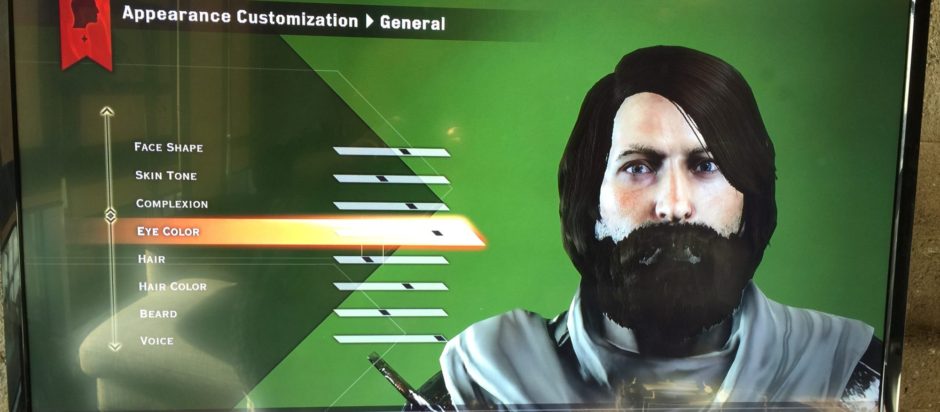[intro]Atmosphere Industries is a Toronto-based cross-media design collective whose projects “combine fun, community, technology, and a hearty helping of sprinkles.” Atmosphere’s pervasive games and experiences have exhibited around the world at events such as Come Out and Play (NYC), where they took home the 2010 Best in Fest and Best Use of Tech awards. This weekend, their faux-celebrity camera-stalking game, Paparazzi, will appear as a part of the IndieCade 2010 Big Games Program [sign up for the game here, or just drop by the IndieCade Village at 1:45pm on Saturday, October 9th]. In the leadup to IndieCade, co-founder David Fono took some time out from his preparations to talk with me about Atmosphere’s interaction design philosophy and playful approach to community building.[/intro]

First, I should disclose that I have brand envy: “Atmosphere Industries” is a great name for a cross-media game design collective. What’s the story behind the name?
Thanks! We actually used to be called “Giant Dice,” but ultimately found that to be a bit too literal — plus, you know, the whole gambling allusion. Credit for “Atmosphere Industries” goes to my co-founder, Kate Raynes-Goldie. By “Atmosphere,” we mean that while our weapon of choice is games, our broader goal is to play around with ambiences and different ways of experiencing the world. The “Industries” is just meant to be ironic because factories don’t actually exist these days, or something.
Artists working in this space come from an unusually wide range of backgrounds, both in terms of theory and practice. What was your trajectory into the realm of pervasive interaction design?
I suspect I align myself with most others in this space by admitting my origin story is fairly nerdy. I went to school for computer science, discovered human-computer interaction, aligned myself with a professor who was into technology art, and developed an obsession with social media back when it was totally avant-garde. So the ingredients were there, but the catalyst was a version of The Game (http://en.wikipedia.org/wiki/The_Game_(treasure_hunt)) I played while interning at Microsoft Research. After returning home, I concocted the harebrained scheme to do something similar in Toronto, but make it last 10 times longer. So, the answer to your question is: it just seemed like fun.
Recently, some commentators have placed so-called “Big Games” in opposition to screen-based “virtual” games. Do you think this is an opposition that’s going to make sense in a few years?
I spend a lot of time trying to explain what I do to people whose only conception of a game is the kind you see on a screen. Pervasive games of any sort are very much on the fringe, and I don’t see this changing for the foreseeable future. If you think of what constitutes a major success in the domain right now — Foursquare, SCVNGR, a few iPhone AR games — these are simplistic games with a small user base of early adopters. Compared to the multi-billion juggernaut that is the videogame industry, they barely even register. The entire world now thinks in terms of screens (even if those screens have GPS and accelerometers.) Personally, I don’t really expect to see this change; I mean it would be fantastic if pervasive games become a substantial force, but it’s far enough off that I find it more productive to think of our work as a niche cultural artifact that offers an alternative vision of the distant future. That’s why we’re an art collective, and not a business, per se. Though if anyone wants to give us money, we can make that work.
As a side note, it’s interesting to note that while virtually everyone stares at me blankly for at least 20 seconds while I describe what a “street game” is, virtually everyone has also spent a significant amount of time playing them — as kids! It’s definitely a comment on society that we seem to have erased these memories from our minds, and replaced them with Halo 3. I’m not sure what that comment is, though.
I see games and activities that layer interaction over the real world simultaneously moving in two general directions: along one path, I think there’s a movement toward more asynchronous or “ambient” games that players can integrate into their daily lives as a kind of background activity — think cross-media Parking Wars or Farmville. The other path leads to real-time/real-world games that work kind of like events or theatre performances, where players show up and have an intense, focused experience. As a designer, what do you see as the strengths and limitations of these paths?
One of my great internal struggles is deciding which of these I’d rather be working on at any given moment.
Ambient games are fantastic, because you have the chance to draw users into deep, sustained narrative or gameplay structures. There’s more raw material to play with a long-term experience, and more user attention to take advantage of. More importantly from a “business” perspective, you can reach a way larger audience. Getting 40 people to love your game is very satisfying, but I’d be lying if I said I didn’t occasionally want to appear on the cover of Wired.
In terms of crafting a powerful experience, though, nothing beats an event. Theatre really is definitely an apt analogy here. I recently had the following revelation: This is theatre, and I should be talking to theatre people. Big games are fundamentally performative and narrative-driven even when they’re not, and when you start looking at interactive theatre shows, the boundary between the two forms becomes essentially invisible. And the difference between making a casual, online game vs. a theatrical performance is comparable to the difference between writing an essay and having a fist-fight. The great thing about theatre, of course, is that it’s highly visceral, profoundly draining, and over almost instantly.

More than a few of your games have covert or overt political/educational messages. Is this just a natural consequence of setting your games in the real world, or are Situationist-style political interventions a part of Atmosphere’s mandate?
To be honest, this is something I’ve never really thought about. Our latest game, Gentrification: The Game!, was (for obvious reasons) our most seemingly political, but we went to great pains to avoid embedding a distinct political message in the game. We were primarily concerned with creating a compelling game. Our mandate is simply to provide enjoyable, playful experiences that transform and reflect a space.
Our interest in themes like gentrification isn’t the result of a pointed artistic agenda, but neither is it a natural consequence of doing our work — I think, rather, it’s a consequence of doing our work well. Our games are about spaces, and if you’re going to have an audience engage meaningfully with a space, you have a responsibility to explore the issues and concerns that are particular to that space. If you’re faithful to that design principle, political or educational themes are unavoidable. A general failure to accomplish this is central to the critiques of pervasive gaming I’ve seen, and just about every game could benefit from deeper ties to the context which it appropriates. But it’s very, very hard to do, and I guess that’s why we don’t see too much of it.
What’s coming up for Atmosphere?
We’ve got a few projects in the pipeline, including some collaborations with theatre folks, as well as some online-only games. But the big thing for the foreseeable future is trying to build up a community around pervasive games (or, more broadly, “unconventional games”) in Toronto. There is a shocking lack of people doing this sort of thing in Canada as a whole. So, if you’re a Torontonian and you’re reading this, you should probably contact us. We have a website going up soon at recess.to, and we’re planning to get some regular events running in the new year.
Thanks for taking the time to do this — and see you at IndieCade!
